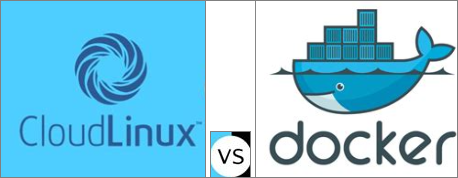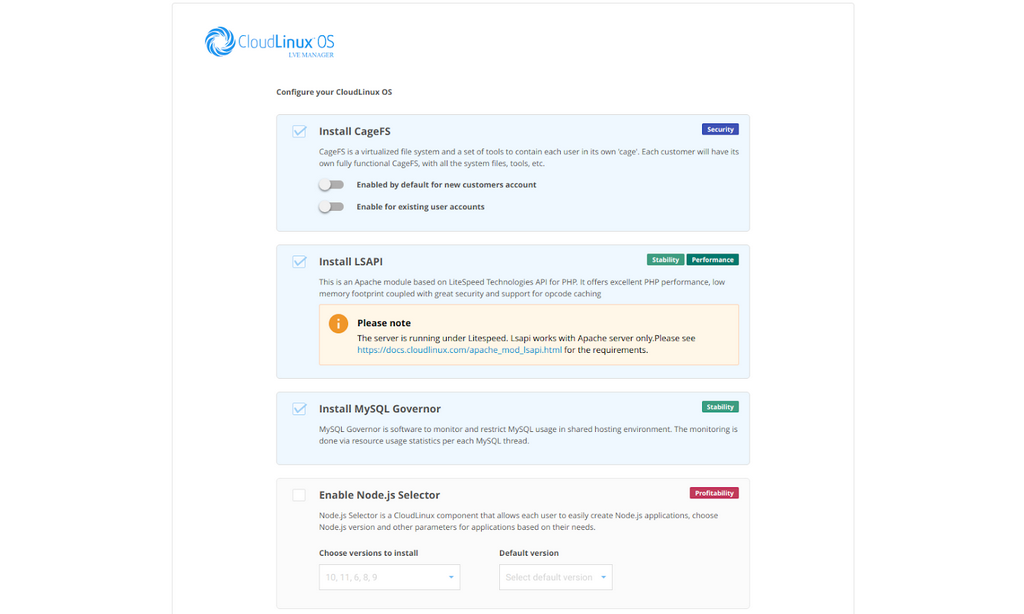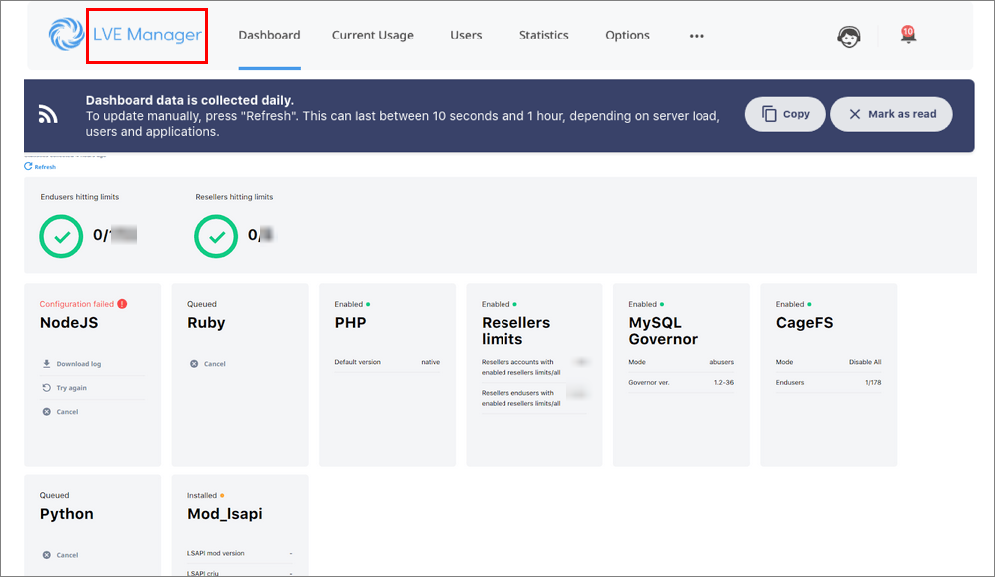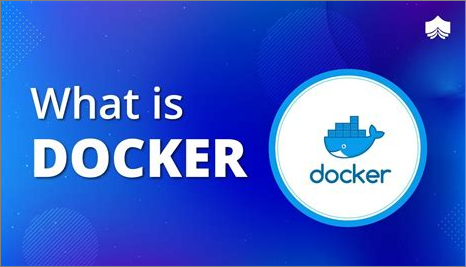CloudLinux vs. Docker Container
HomepageArticlesOperating Systems, Containerization...CloudLinux vs. Docker Container 
CloudLinux vs. Docker Container - Introduction
There is an abundance of Linux distributions in existence today. As of 2024, the total surpasses six hundred, with each offering unique purposes, specifications, and features. Why is this number significant? We wish to draw attention to a specific distribution that stands out due to its exceptional features and the support of a company dedicated to advancing the Linux ecosystem. This notable distribution is CloudLinux OS.
CloudLinux OS serves as an operating system that establishes a secure and reliable foundation for shared hosting services. This cloud-computing solution, which is based on CentOS, offers a fortified and secure setting for hosting providers. With the implementation of CloudLinux, users experience greater oversight in the distribution of server resources.
This article outlines CloudLinux, focusing on its key attributes and comparing it with Docker – a collection of platform-as-a-service (PaaS) solutions that utilize operating system-level virtualization to distribute software in the form of containers.
What is CloudLinux OS?
CloudLinux is a Linux distribution designed explicitly for shared hosting environments. It enhances server stability, security, and efficiency by creating separate lightweight virtualized environments, known as LVEs (Lightweight Virtual Environments), for each user. This separation mechanism prevents resource spikes or security flaws from affecting other users. Additionally, CloudLinux features CageFS, which offers enhanced security by isolating each user's files and processes. Overall, CloudLinux is tailored to meet the distinct needs of hosting providers, guaranteeing a secure and reliable hosting environment for websites and applications.
CloudLinux Features
To summarize, the core of CloudLinux OS is represented by its rich set of features and tools. In contrast to traditional web hosting operating systems, CloudLinux offers multiple advantages that target better resource allocation, increased server stability, enhanced security, and an improved user experience. This combination leads to a one-of-a-kind operating system that is ideally suited for shared hosting environments or situations where meticulous control is essential.
CloudLinux OS Manager (Wizard)
First and foremost, CloudLinux OS is equipped with a user-friendly Installation Wizard that automatically appears after each OS installation. Upon your initial connection to the server, this wizard will pop up, leading you to the CloudLinux LVE Manager (Lightweight Virtualized Environment) in your control panel. For WHM (cPanel) users, it can be found under Server Configuration. The Wizard streamlines the installation process for any or all components of CloudLinux OS. The method is clear-cut: select the components you want and click the button to proceed.

You have the option to bypass the Wizard, which will direct you to the CloudLinux LVE Manager dashboard. In this dashboard, you will find a grid displaying all components, their current status, and further details for each one. Additionally, you can enable or disable these components from this interface, so let’s explore them in more detail.
CloudLInux Pivotal Components

1. LVE Manager
The LVE Manager acts as the main control center for all the components that accompany the operating system. The screenshot above highlights eight key components that constitute CloudLinux OS. These components are essential for making the operating system ideal for shared hosting scenarios, and you will appreciate their importance as we explore them further.
2. NodeJS, Ruby, Python – Selectors
You are likely familiar with these programming languages, as they serve as the foundation for various application developments. CloudLinux OS designates these three languages, along with PHP, as selectors. These selectors facilitate end users in easily building applications, choosing their preferred versions of specific software, and installing any modules necessary for their environment or the application itself.
3. PHP Selector
The PHP selector, which is the fourth option, empowers end users to choose a PHP version that aligns with their individual needs, separate from the server's global PHP version. This feature allows for personalized adjustments to version and extension requirements without server-imposed limitations.
4. Mod_lsapi
This is the most efficient PHP handler for Apache, functioning as a seamless substitute for SuPHP, FCGID, RUID2, and ITK. It boasts a low memory usage and is compatible with .htaccess PHP directives
5. Reseller Limits
One of the standout features of CloudLinux OS is the capability to set resource limits for each "reseller." This allows administrators to control the allocation of server resources—including CPU, IO rate, memory, inodes, process limits, and concurrent connections—for each account on the server. This functionality is particularly beneficial as it prevents any single account from consuming excessive resources, ensuring that fluctuations in one user's activity do not disrupt others
6. MySQL Governor
Furthermore, the MySQL Governor feature provides real-time tracking of CPU and disk IO usage for every user. Should a user exceed their allocated limits through MySQL queries, their access will be throttled until they are back within the specified limits
7. CageFS
Lastly, CageFS is vital in shared hosting settings, as it guarantees that users cannot interact with one another. It effectively blocks users from viewing each other's files, thus preventing malware transmission and ensuring the complete security and isolation of individual user data.
8. Secure Links
This feature protects files and folders from unauthorized access by preventing the exploitation of symbolic links, thus enhancing overall security.
9. Backup and Recovery
Its integrated backup solutions safeguard data against hardware failures, user errors, and cyber threats, ensuring business continuity
10. Multiple Tenants
The platform enables multiple hosting accounts to run securely and independently on the same server, eliminating conflicts and security vulnerabilities.
11. Strong Community
CloudLinux is backed by a robust community and extensive documentation, which assists users in troubleshooting and gaining valuable insights.
These features may be few, but they are essential for anyone aiming to create a shared hosting environment, whether as a reseller or a developer needing an isolated testing space. They represent the core elements that contribute to the allure of CloudLinux OS.
Real-World Examples
Here we will present some real-world examples showing how CloudLinux is used.
Shared Hosting
CloudLinux is a popular choice in shared hosting environments where multiple websites share a single server. It promotes stability and security by isolating each tenant, which prevents one site from disrupting others due to excessive resource usage or security breaches.
Web Hosts
Hosting providers rely on CloudLinux to deliver secure and reliable hosting services to their clients. By implementing resource allocation and limits, they can ensure fair resource usage among various hosting accounts
E-Commerce Systems
This system is particularly advantageous for e-commerce sites that demand consistent server performance and security, as it prevents any individual website from monopolizing resources, thus facilitating smooth operations and an optimal shopping experience for users
CMSs (Content Management Systems)
Additionally, CMS platforms like WordPress, Joomla, and Drupal benefit from CloudLinux’s resource management features, which help maintain the performance of high-traffic websites and resource-intensive plugins without negatively impacting other sites on the server.
Sandboxing
CloudLinux is well-suited for the creation of isolated environments for both development and testing (or Sandboxing) purposes. This platform enables developers to engage in their projects without the risk of interference from other users or server applications.
Balanced Reseller Hosting
By implementing resource limitations and isolation, resellers can ensure server stability and a uniform hosting experience
Small and Medium Enterprises (SMEs)
Small and medium-sized businesses that utilize web applications or online services can leverage CloudLinux’s security features and backup solutions, which are essential for protecting critical data and ensuring business continuity during unexpected events.
Advantages of CloudLinux OS:
When it comes to shared hosting, CloudLinux presents various advantages over traditional server setups. The important ones are:
Stability and Security
Effective allocation of resources bolsters server stability, ensuring that no single account can monopolize resources and create performance issues for others. Therefore, unexpected spikes in traffic or high resource demands from one account will not disrupt the server or affect the performance of other accounts. The security measures implemented by Cloud Linux prevent malicious users from compromising other accounts on the server as well.
Distribution of Server Resources
With CloudLinux, dedicated resources can be assigned to individual accounts, which prevents any single account from overusing resources and adversely affecting the performance of other accounts on the server
Compatibility
CloudLinux is designed to work with a range of control panels, such as cPanel, DirectAdmin, and Plesk. This feature enables web hosting companies to integrate CloudLinux into their existing hosting frameworks without needing to modify their control panel or server management applications
Optimized Performance
By alleviating resource contention and facilitating fair resource distribution, CloudLinux significantly improves server performance. This enhancement translates into faster website load times, lower downtime, and a superior user experience for clients. The MySQL Governor feature in CloudLinux monitors each user's resource usage and actively prevents abuse in real-time, which significantly enhances database performance
Flexibility
The option to select the desired PHP version guarantees that servers align with the specific PHP requirements.
Backup and Disaster Recovery
CloudLinux offers comprehensive backup and disaster recovery solutions, allowing providers to protect their data and maintain business continuity during unexpected events such as hardware failures or cyber-attacks.
Cost-effectiveness
The resource allocation and limitation capabilities of CloudLinux allow providers to utilize resources more effectively, resulting in cost efficiencies. Consequently, providers can create hosting plans that reflect actual resource consumption, thereby decreasing waste and increasing profitability.
Disadvantages
While there are several advantages to using CloudLinux, it is important to acknowledge its drawbacks. The downsides are:
Excess Cost
The use of CloudLinux necessitates a licensing fee, which increases the overall costs of hosting services.
Lack of Compatibility
While it is compatible with many control panels, it does not support every third-party application and software.
Learning Required
Administrators must familiarize themselves with CloudLinux's distinct features and interface, which can be time-consuming
Limitations on Resources Allocation
Although the resource management capabilities enhance both stability and security, they also impose limitations on the resources allocated to individual accounts, which may not suit all websites or applications.
CloudLinux Dependency
Once a server is established with CloudLinux, switching to a different operating system can be quite complex, limiting future options
Issues with PHP Selectors
While CloudLinux allows for the selection of the PHP version, a lack of proactive management by the web host may result in the default PHP version being outdated, which could create security risks, even if the CMS and plugins are fully updated.
What is Docker Container?

Now it is time to see what is Docker and how it differs from CloudLinux.
Docker is a powerful tool designed for running applications in containers. These containers bundle all the essential dependencies and code needed for your application, allowing it to operate uniformly across various machines.
While it shares some characteristics with Virtual Machines, Docker is far more efficient. Instead of requiring a completely separate operating system—which can be quite resource-heavy—Docker operates containers that utilize the host operating system, focusing on software-level virtualization.

Docker Requirements
The Docker Engine operates on Linux, Windows, and macOS, offering support for Docker containers on both Linux and Windows systems. The specific distribution of Linux is largely irrelevant, as most versions share the same kernel and differ mainly in user software. Docker allows for the installation of this user software within the container, which means you can run a CentOS container on an Ubuntu host. However, it is not possible to run FreeBSD on Ubuntu due to the differing kernels.
Docker Containers
The Docker container image is tailored to include only what is necessary for your application to operate. For instance, if your application requires nginx and Node.js, the container image will incorporate these components while excluding the additional userland applications typically found in a Linux setup. Docker executes applications within containers, guaranteeing consistency and compatibility across different computing environments, from individual developer systems to expansive data center infrastructures.
How Does Docker Container Work?
At the core of Docker's operation lies the Docker Engine, a sophisticated client-server application that consists of three essential components: a server that runs as a long-lived daemon process, recognized as the dockerd command; the Docker API, which details the communication interface for directing the daemon; and a command-line interface (CLI) client, known as the docker command.
The Docker daemon functions on the host operating system, overseeing the management of Docker containers. It is responsible for tasks such as building, executing, and distributing these containers. When commands are sent through the Docker CLI, they communicate with the Docker daemon, which then handles the building, management, and execution of the containers
In simple terms, the Docker daemon oversees containers by leveraging Docker images, which are created through a defined set of Docker commands that specify the application's required parameters and components.
The architecture of Docker leverages various features of the Linux kernel, including namespaces and cgroups, to create an isolated environment for each container, thereby restricting its access to system resources. This isolation enables multiple containers to operate concurrently on a single Linux instance, ensuring that each container remains secure and distinct.
Let us see the benefits of using Docker:
Single OS Layer
Unlike traditional virtual machines that are often bulky and resource-heavy, Docker containers facilitate the coexistence of numerous software containers on a single system without necessitating separate operating system instances
Lightweight
This is made possible because containers share the host system's kernel, resulting in reduced space consumption and lower resource requirements, along with enhanced performance.
Time-conserving Environment
Developers can create Docker containers to encapsulate the complete runtime environment, which encompasses the application, its direct dependencies, essential binaries, and configuration files.
Increased Efficiency
Docker container images act as portable and consistent snapshots of the container's environment, ensuring that applications operate uniformly regardless of the deployment context.
As a result, Docker components effectively resolve the widespread "it works on my machine" dilemma, ensuring that applications run consistently across various environments.
Moreover, Docker containers provide the capability to install a range of applications, including WordPress. To do this, you simply need to deploy WordPress as a Docker image within a container.
Docker Container Comparison with CloudLinux
Now we will see the difference between CloudLinux OS and Docker.
1. CloudLinux: Designed specifically for shared hosting environments, CloudLinux is an operating system that delivers isolation and resource allocation capabilities. This functionality guarantees the stability and security of multiple websites hosted on a single server
Docker: Conversely, Docker serves as a containerization platform that enables the packaging and deployment of applications along with their dependencies, creating a lightweight and portable runtime environment.
2. CloudLinux: CloudLinux incorporates a kernel-based virtualization strategy known as Lightweight Virtual Environment (LVE). This system allows for meticulous control over how resources are allocated among different users on a shared server.
Docker: Docker implements containerization technology that operates at the OS level, conversely. By utilizing the kernel of the host operating system, Docker avoids the necessity for a distinct guest operating system, thereby achieving superior performance and efficiency.
3. CloudLinux: It offers user-level isolation by restricting resource consumption for each user, ensuring that the actions of one user do not adversely affect the performance of others on the same server
Docker: In contrast, achieves isolation at the application level, with each container being self-sufficient, featuring its own file system, process space, and network stack, thereby providing strong separation between applications
4. CloudLinux: Primarily, it is employed in shared hosting environments where numerous websites are hosted on a single server, allowing for streamlined management and scalability through its resource allocation and isolation functionalities
Docker: Is, however, focused on application packaging, deployment, and scalability, enabling developers to easily bundle applications with their dependencies for deployment in various environments, making it particularly suitable for cloud-native and microservices architectures.
5. CloudLinux: It enhances resource management by ensuring equitable resource distribution among users, preventing any single user from monopolizing server resources.
Docker: Being a lightweight containerization platform, enhances resource efficiency by eliminating the need for separate guest operating systems, allowing for effective application packing and reducing the overhead of running multiple instances of the same OS.
6. CloudLinux: It is specifically designed for shared hosting and integrates closely with the operating system, providing stability and compatibility for hosting providers
Docker: Excels in flexibility and portability, allowing for easy deployment of containers across various environments, thus ensuring consistency in development, testing, and production stages.
Conclusion
In essence, CloudLinux functions as an operating system optimized for shared hosting environments, providing essential features for resource allocation and isolation. On the other hand, Docker is a containerization platform that packages and deploys applications along with their dependencies, promoting portability and scalability across multiple environments. to take advangates of Cloudlinux please signup WebDesignLabs Shared hosting packages

